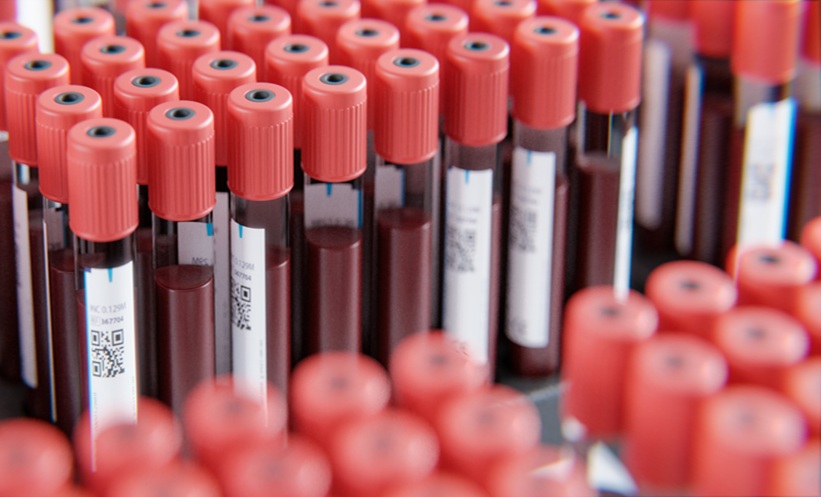Abstract
Key Points
1. Transurethral resection of the prostate (TURP) is one of the most common procedures worldwide. It has gained popularity over the years despite well-documented cases of intraoperative TURP syndrome. Many urologic surgeons are comfortable discharging patients 72 hours post-operation; however, this case report points out the persistent risk of TURP syndrome even after 72 hours, particularly in resource-limited settings.
2. This is a case report exploring unusually delayed TURP syndrome in a rural hospital setting.
3. The authors hope that clinicians and surgeons who are involved in endoscopic surgery will take note of this case and be vigilant in the management of post-TURP patients as life-threatening TURP syndrome may have a delayed onset.
INTRODUCTION
Transurethral resection of prostate (TURP) complications may be defined as postoperative complications that occur in patients who have undergone endoscopic prostatectomy.1,2 These include haemorrhage, clot retention, catheter blockage, and volumetric overload hypotension leading to volumetric overload shock as a result of massive fluid gain from either fluid absorption after prostatic surgery or massive fluid infusion.3
Haemorrhage and clot retention may be immediate or delayed, while vascular hypotension is the result of fluid absorption or excessive intravenous (IV) infusion that leads to reduced serum sodium, a condition known as dilution hyponatraemia (<120 mmol/L).4 They are all life-threatening and remain significant challenges in surgeries, especially in endoscopic urology surgery. Each complication is managed based on the underlying cause.5 The effective management of clot retention is clot evacuation, while management of volumetric overload is hypertonic sodium therapy (HST), including HST 3.0% NaCl, HST 5.0% NaCl, and 8.4% NaHCO₃. Haemorrhage is treated by endoscopic ligation of the bleeders in addition to blood transfusion, which may be in combination with fresh frozen plasma when available (or a whole package of blood).4 The management of concurrent haemorrhage, clot-induced urine retention, and volumetric hyponatraemia with limited resources requires a high suspicion index and this can mostly be possible by experienced surgeons.4,5 The authors present a case of a 60-year-old male patient who developed delayed post-TURP clot retention and volumetric hyponatremia. He was managed by endoscopic clot evacuation and bleeders’ electrocoagulation with continuous irrigation, but the patient developed volumetric hyponatraemia on Day 5 post-clot evacuation. The patient finally recovered completely and was discharged on the eleventh day after evacuation.
CASE PRESENTATION
A 60-year-old man presented at St. Francis Referral Hospital’s emergency department with difficulty passing urine for 3 days and lower abdominal distention for 24 hours, 7 days post-TURP. For 6 months before TURP, the patient has been visiting a urology clinic due to bothersome lower urinary tract symptoms. Conservative medical management was given but had no significant clinical improvements, so the best option for the patient then was to undergo standard TURP surgical intervention. Pre-operative clinical assessment and evaluations were done, which revealed stable vital signs with a temperature of 37.0 °C, blood pressure of 130/80 mmHg, pulse rate of 82 beats/min, and respiratory rate of 19 breaths/min. Abdominal pelvic ultrasound was done and was normal with a residual urine volume of 200 mL and an estimated prostate size of 62 g. On digital rectal examination, the patient had normal anal verge, normal anal tone, smooth rectal mucosa, and a firm enlarged prostate.
Pre-operative preparations were done effectively, and the patient had no other comorbidities. Among the investigations done, full blood count was also analysed, and all parameters were normal, haemoglobin was 12.1 g/dL, platelet count was 298×10³, and prostate-specific antigen was 4.9 ng/mL. Other relevant investigations done were within normal ranges. TURP was the best option, and it was done under spinal anaesthesia. Urethrocystoscopy intraoperative findings showed an enlarged median lobe and normal bladder mucosa. TURP was successfully done by using Storz sheath 27fr (KARL STORZ SE & Co. KG, Tuttlingen, Germany) and cutting loop number 27. Lastly, the urinary bladder was evacuated of prostatic chips and cleaned. Haemostasis was achieved through electrical coagulation.
A three-way indwelling urethral catheter was left in situ for 72 hours for post-operative continuous irrigation. The patient was admitted to the intermediate care unit (IMC). Following an uneventful postoperative period in IMC, the urethral catheter was removed after 72 hours, and the patient was discharged home in stable condition.
On the sixth day post-discharge, the patient reported at the emergency department presenting with difficulty in passing urine, suprapubic pain, and abdominal distention. On examination the patient looked like he was in pain, pale (conjunctiva), afebrile, blood pressure was 167/104 mmHg, pulse rate was 86 beats/min, respiration rate was 24 breaths/min, the temperature was 36.9 °C, and oxygen saturation was 98% on room air. An emergency abdominal pelvic ultrasound showed significant clot retention (21×17 cm). He was diagnosed with anaemia, clot retention, and transient hypertension. An emergency haemoglobin level investigation was ordered, which was 6.7 g/dL. Blood transfusion was performed, and the patient was taken to the theatre for an emergency clot evacuation and to arrest the bleeding. Clot evacuation was successfully done using Storz sheath 27Fr and a few bleeders found were electrofulgurated. The bladder was irrigated by using normal saline and the three-way indwelling urethral catheter was reinserted for continuous irrigation as indicated in the literature for TURP prevention of clot retention formation.
The patient was admitted and given empirical antibiotics and one unit of fresh frozen plasma, and he was monitored closely in the IMC. The patient was visited by doctors regularly every day, and he was making good progress, but 5 days post-reoperation the patient developed difficulty breathing, and restlessness, BP was 167/105 mmHg, pulse rate was 96 pulse/min regular, oxygen saturation was 86% on room air. On physical examination the chest was clear. The authors had a provisional diagnosis of TUR syndrome based on high BP of unknown cause. Emergency serum electrolyte was ordered that revealed sodium level was at 105 mmo/L, potassium level was at 2.7 mmo/L, and creatinine level raised to 157.3 mmo/L. Chest X-ray and CT scan were all normal. Hence post-TURP hyponatraemia, hypokalaemia, and acute kidney injury were confirmed (TURP with multiple organ failure). The patient was ordered 500 mL 3% hypertonic saline running slowly for 4 hours, IV KCl 40 mEq (milliequivalent) in 500 mL NS stat (normal saline single dose), then slow K4 tablets 8 hours, serial monitoring of serum sodium and potassium for 24 hours, three units of blood transfusion, IV tranexamic acid injection, furosemide 40 mg every 8 hours for 24 hours, oxygen therapy 3 L/min via nasal prong, and regular monitoring of vital signs, particularly blood pressure, pulse rate, and respiration rate.
DISCUSSION
TURP remains the gold standard and safe surgical procedure in prostate surgeries. However, like any other surgery, the procedure is rarely associated with complications, but some of them are life-threatening, including TURP syndrome resulting from absorption of irrigant fluid during resection of the prostate.3 The common clinical presentations include nausea, vomiting, convulsions, coma, altered vision, and respiratory distress, which results from pulmonary oedema.1,6 Most of these clinical features were present in the case presented here (acute respiratory distress, restlessness, confusion, and convulsion). In the authors’ case, 5% glucose was the fluid used as an irrigant during TURP, as the authors have a monopolar resectoscope, and 0.9% normal saline was used as continuous irrigation fluid after prostatectomy.
In this case, the patient had multiple complications involving clot retention, haemorrhagic anaemia, and hyponatraemic shock with multiple organ failures, which are reflected by clinical presentations (low blood pressure, raised pulse rate, acute respiratory distress, restlessness, and convulsions) and supported by laboratory investigation (low serum sodium and potassium and raised serum creatinine).7 Hyponatraemia and hypokalaemia may be the result of volumetric fluid overload caused by both fluid absorption following bladder clot irrigation and IV fluid administration, as reported in other literature.8 It should be noted that this patient had significant blood loss after TURP, which led to anaemia, and hence he had a significantly low haemoglobin level (6.7 g/dL) during his second admission, for which a blood transfusion of three units was administered.3,7
It has been reported that during transurethral resection of the prostate, TURP syndrome is one of the complications and results from excessive absorption of electrolyte-free irrigation fluids, causing acute hypervolaemia and hyponatraemia.9 The clinical parameters of hyponatraemia may be asymptomatic, or the patient may have electrocardiographic symptoms including hypertension, nausea, vomiting, pulmonary oedema symptoms (acute cardio-respiratory disease), convulsions, and coma.1,5 There are two roles of irrigation solution first is to distend the bladder and hence to clear the surgical site, and the second is to wash out the resected tissues and blood. The common fluids used include glycine, 5% glucose, sorbitol, mannitol, and normal saline in a bipolar or monopolar resectoscope.4
The authors’ patient presented clinical features of hyponatraemia 5 days post-endoscopic clot retention evacuation. The case becomes contrary to other reported cases in literature, of which most of the reported cases occur intraoperatively or immediately after the operation.10 In this patient, hyponatraemia may have been attributed to several factors including multiple IV fluid administration during TURP, irrigant fluid (dextrose 5%) absorption in the monopolar resectoscope the authors used, and repeated urethrocystoscopy and clot evacuation. In published cases, signs and symptoms are observed during surgery where, in patients under general anaesthesia, cardiovascular signs (marked by unexplained raised hypertension) and refractory bradycardia are predominant features followed by neurologic manifestations (convulsions and coma).11 This is a unique case as it happened several days after TURP.
The administration of hypertonic saline remains the gold standard in the management of TURP hyponatraemia. This case becomes similar to other reported cases where hypertonic saline administration was successful in rescuing a patient’s life.12 However, this case teaches a lesson that TURP syndrome may occur as a late complication and may result in multi-organ failure involving kidney injury, encephalopathy, and shock. At this moment, it requires a suspicion index based on clinical manifestation supported by diagnostic investigations, particularly serum electrolytes and renal function profile.
CONCLUSION
Syndromic delayed post-TURP hyponatraemia is rare, and limited health-resourced areas require a high suspicion index, which needs an experienced urology surgeon for early diagnosis and to avoid mismanagement. The authors therefore advise urologists to be careful for a few days following endoscopic procedures, to bear in mind and take into consideration everything, even in cases of patient-reported symptoms. Hence, the 72-hour discharge protocols adopted by many may be revisited, especially in limited health-resourced areas. Luckily, the authors’ patient was treated promptly due to the hospital’s proximity. Hypertonic saline remains a gold standard in TURP syndrome management, and hence it should be readily available in operating rooms and wards
Ethical Consideration
The patient signed informed consent prior to writing this case. Also, ethical clearance was obtained from the internal reviewer board at Saint Francis University College of Health and Allied Sciences, Ifakara, Tanzania.







